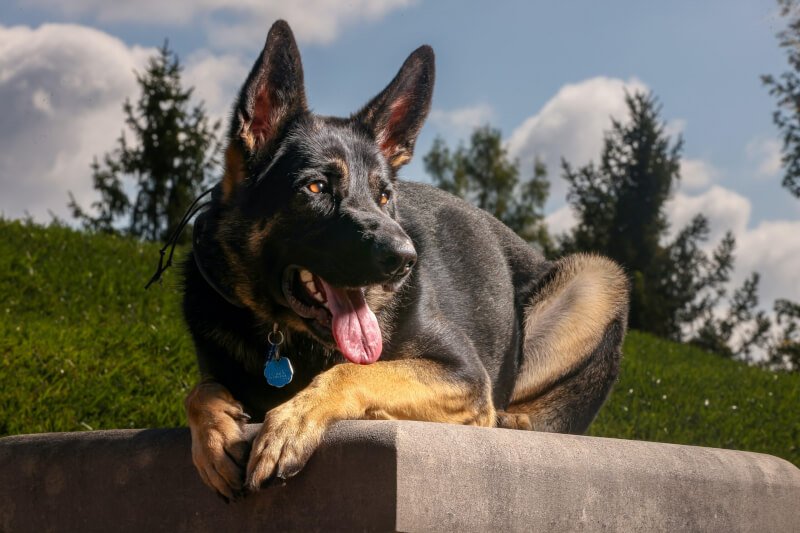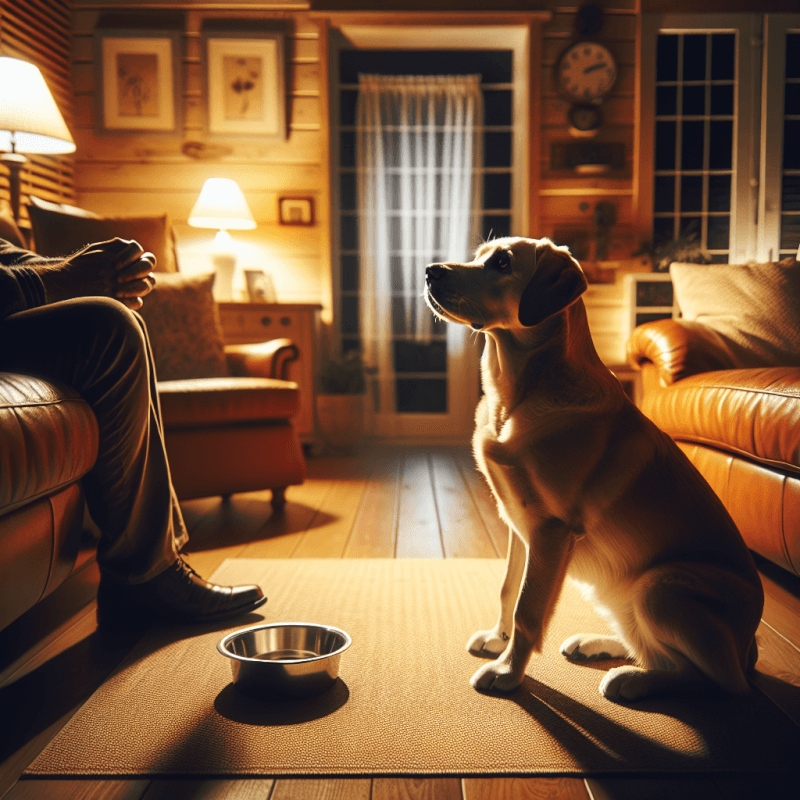Are you struggling to train your pet? Look no further. This article explores the topic of pet training at home and offers valuable tips and tricks to help you achieve success. Whether you have a new puppy or an older dog, this article will provide you with the knowledge and techniques necessary to effectively train your furry friend right from the comfort of your own home. Say goodbye to expensive training sessions and hello to a well-behaved and obedient pet. Let’s get started on this exciting journey of pet training!

Benefits of Pet Training at Home
Improved Behavior and Socialization
Training your pet at home offers numerous benefits, starting with improved behavior and socialization. By teaching your pet essential commands and obedience skills within the familiar environment of your home, you can effectively address any behavioral issues they may have. Whether it’s excessive barking, jumping, or chewing, consistent training can help curb these unwanted behaviors and encourage better manners. Additionally, training at home allows you to gradually expose your pet to different social situations, helping them become more comfortable and well-behaved around other animals and people.
Ready for Cat Trivia?
Test your knowledge about cats!

Strong Bond with Your Pet
One of the most fulfilling aspects of training your pet at home is the opportunity it provides to strengthen the bond between you and your furry friend. Training sessions serve as dedicated quality time where you and your pet can focus solely on each other. This creates a sense of trust and enhances communication between you both, fostering a deep and meaningful connection. The shared experiences during training build a foundation of companionship and understanding, leading to a more harmonious and fulfilling relationship.
Convenience and Cost Savings
Training your pet at home offers the advantage of convenience and cost savings. Unlike enrolling in group training classes or hiring a professional trainer, you have the flexibility to schedule training sessions at a time that suits you best. Whether it’s early in the morning or late at night, you can work around your own schedule without any added stress. Additionally, training at home eliminates the need for commute and saves you money that would have been spent on class fees or trainer fees. With the right resources and commitment, you can achieve remarkable results right from the comfort of your own home.
Preparing for Pet Training at Home
Choose the Right Training Method
Before embarking on your pet training journey, it’s crucial to choose the right training method that aligns with your pet’s individual needs and personality. There are various effective training methods to consider, such as reward-based training, clicker training, and marker training. Reward-based training focuses on positive reinforcement and rewards, while clicker training uses a distinct sound to mark desired behaviors. Marker training involves using a specific word or phrase to communicate with your pet. By understanding the different training methods and their benefits, you can select the approach that suits you and your pet the best.
Create a Suitable Training Environment
When it comes to pet training, creating a suitable training environment within your home is essential. Choose a quiet and distraction-free area where you can focus on the training sessions without interruptions. Clear any clutter or obstacles that may hinder the training process. Make sure the area has ample space for your pet to move around comfortably. It’s also important to have proper lighting and ventilation in the training space. By creating a conducive environment, you can enhance the effectiveness and success of your training sessions.
Gather Training Supplies
To ensure smooth and productive training sessions, it’s important to gather all the necessary training supplies beforehand. These may include treats, a clicker (if you choose clicker training), a leash, a collar, and any additional items specific to your pet’s training needs. Treats serve as a positive reinforcement tool while teaching your pet new commands. A leash and collar are essential for leash training and outdoor exercises. By having all the required supplies readily available, you can maintain a seamless training routine without any interruptions.
Basic Training Commands for Pets
Sit
The “sit” command is one of the fundamental commands every pet should learn. It teaches your pet to sit on command, which is useful in various situations such as greeting guests or before crossing a road. To train your pet to sit, hold a treat close to their nose and slowly raise your hand above their head, allowing them to follow the treat with their eyes and nose. As their head goes up, their bottom will naturally lower into a sitting position. Once they sit, praise them and reward them with the treat. Repeat this process consistently until your pet can sit reliably with the command.
Stay
The “stay” command is important for ensuring your pet remains in a designated area or position until given permission to move. To train your pet to stay, ask them to sit or lie down, then hold your hand up in a stop position while saying “stay” firmly. Take a step back, and if your pet remains in position, reward them with praise and a treat. Gradually increase the distance and duration of the stay, reinforcing the command each time. It’s important to practice this command in various environments to help your pet generalize the behavior.
Come
The “come” command is crucial for your pet’s safety and is especially useful when they’re off-leash or in a potentially dangerous situation. To train your pet to come when called, start in a distraction-free environment. Begin by saying your pet’s name followed by the command “come” in a cheerful tone. Encourage them to come towards you by kneeling down or clapping your hands. Once they reach you, reward them with praise and a treat. Gradually increase the distance between you and your pet, practicing the command in different environments with increasing distractions.
Lie Down
The “lie down” command teaches your pet to lie down on command, providing them with a relaxed and controlled behavior. To train your pet to lie down, start with them in a sitting position. Hold a treat close to their nose and then slowly move it towards the ground in a straight line. As your pet follows the treat, their body will naturally lower into a lying position. Once they lie down, praise them and reward them with the treat. Consistently practice this command, gradually moving further away from them and incorporating distractions to reinforce the behavior.
Leave It
The “leave it” command is essential for preventing your pet from picking up or engaging with something they shouldn’t. Whether it’s a hazardous object or an item of interest, teaching your pet to leave it can prevent accidents or potential harm. To train your pet to leave it, start with a low-value treat in one hand and a closed fist in the other. Present your closed fist with the treat and say “leave it” firmly. If your pet respects the command and doesn’t try to get the treat, reward them with the treat from the other hand. Gradually increase the difficulty by using higher-value treats or introducing distractions.
Drop It
The “drop it” command is particularly useful if your pet picks up something they shouldn’t have in their mouth. This command teaches them to release an object on command. To train your pet to drop it, start with a toy or an item they enjoy playing with. Allow them to hold onto it and then show them a high-value treat. As they drop the item to get the treat, use the command “drop it” and praise them. Repeat this process consistently, gradually replacing the high-value treat with verbal praise and other rewards.
Positive Reinforcement Training Techniques
Reward-Based Training
Reward-based training is a positive reinforcement technique that involves rewarding your pet when they exhibit desired behaviors. This method focuses on identifying and strengthening the behaviors you want to encourage. By offering treats, verbal praise, or playtime as rewards, you create a positive association with the desired behavior, making it more likely that your pet will repeat it. Reward-based training allows you to build a strong bond with your pet, enhancing their motivation to learn and participate in training sessions.
Clicker Training
Clicker training is a popular positive reinforcement technique that uses a small handheld device called a clicker. The clicker makes a distinct sound that serves as a marker for desired behaviors. By timing the clicker sound to coincide with the exact moment your pet performs a desired behavior, you can effectively communicate to them that they have done something right. Immediately following the click, you offer a treat or reward to reinforce the behavior. Over time, your pet learns to associate the clicker sound with positive outcomes, making training more efficient and precise.
Marker Training
Marker training is similar to clicker training but involves using a specific word or phrase as the marker instead of a clicker. This technique allows you to communicate with your pet through verbal cues, reinforcing their understanding of specific commands or behaviors. For example, you can use the word “yes” or “good” as the marker to convey that your pet has done something correctly. Following the marker, you reward your pet with treats or praise to reinforce the behavior. Marker training enables you to effectively shape and reinforce desired behaviors while improving communication with your pet.

Addressing Common Behavior Issues
Barking
Excessive barking can be a common behavior issue among pets, but with consistent training, it can be managed effectively. One approach is to teach a command such as “quiet” or “enough.” When your pet starts barking, firmly say the command and wait for a few seconds of silence. Immediately reward them with praise or treats to reinforce the quiet behavior. It’s important to identify the underlying cause of the barking, such as boredom or anxiety, and address it through enrichment activities and proper exercise. Consistency and positive reinforcement are key in reducing excessive barking.
Chewing
Chewing is a natural behavior for pets, but it can become problematic when they target your belongings. To address this behavior, provide appropriate chew toys and redirect your pet’s attention to them whenever you catch them chewing on something they shouldn’t. When your pet chews on the appropriate item, praise them and offer verbal or physical rewards. Consistently reinforcing the behavior of chewing on designated toys will help deter them from chewing on household items.
Jumping
Jumping up on people is a common behavior issue, especially for dogs, but it can be managed through training. Teach your pet an alternative behavior, such as sitting, that they can perform when greeting people. When your pet jumps up, turn away from them and ignore them until they have all four paws on the ground. Once they are calm and have all paws down, reward them with attention and praise. Consistency is crucial in teaching your pet that jumping is not an acceptable behavior.
Pulling on the Leash
Walking your pet should be an enjoyable experience for both of you, but pulling on the leash can make it frustrating and challenging. To address this behavior, start by teaching your pet to walk beside you on a loose leash. Each time they start pulling, stop walking and wait for them to come back to your side. Once they are back at your side, reward them and continue walking. This teaches them that walking beside you without pulling is the behavior that earns rewards. Be patient and consistent when training your pet to walk nicely on a leash.
House Training Your Pet
Establish a Routine
Establishing a routine is crucial for successfully house training your pet. Set a schedule for feeding, potty breaks, and playtime, ensuring consistency throughout the day. Dogs, for example, typically need to eliminate shortly after waking up, after meals, and before bedtime. By taking them to the designated potty area at these specific times, you can reinforce the desired behavior and decrease the likelihood of accidents in the house. Remember to be patient and understanding during the house training process, as accidents may happen during the learning phase.
Use Positive Reinforcement
Positive reinforcement is key when house training your pet. Always reward them with verbal praise, treats, or playtime when they eliminate in the appropriate area. This helps them associate the desired behavior with positive outcomes, encouraging them to repeat it. Avoid punishing or scolding your pet for accidents, as it may create fear or anxiety, hindering the house training process. Instead, focus on rewarding and reinforcing the correct behavior to create a positive and effective learning experience.
Crate Training
Crate training can be a valuable tool in house training your pet. Dogs, in particular, have a natural instinct to keep their sleeping areas clean, making crate training an effective method for teaching them to hold their bladder and bowels. Start by introducing your pet to the crate gradually, making it a positive and comfortable space with cozy bedding and toys. Use treats and praise to encourage them to enter and spend time in the crate. During the house training process, use the crate to confine your pet when you can’t directly supervise them, gradually increasing the duration as they learn to hold it. Remember to never use the crate as a form of punishment.

Training Your Pet to Walk Nicely on a Leash
Choose the Right Leash and Collar
Choosing the right leash and collar is essential for comfortable and effective leash training. For dogs, consider using a flat collar or a harness that doesn’t put strain on their neck. Avoid using retractable leashes, as they can encourage pulling and give your pet too much freedom. Select a leash that is appropriate for your pet’s size and strength, allowing you to maintain control during the training process. It’s also important to ensure that the collar or harness fits properly, preventing any discomfort or potential harm.
Start with Short Walks
When training your pet to walk nicely on a leash, start with short walks in a familiar and low-stimulus environment. This allows your pet to become accustomed to the leash and the concept of walking by your side. Use positive reinforcement techniques, rewarding your pet for walking beside you without pulling. Gradually increase the duration and distance of the walks, introducing different environments with varying levels of distractions. Consistency and patience are key in teaching your pet to walk calmly and pleasantly on a leash.
Use Positive Reinforcement
Positive reinforcement is crucial in leash training. Whenever your pet walks beside you calmly without pulling, offer verbal praise, treats, or playtime as a reward. By associating walking beside you with positive outcomes, your pet will be motivated to repeat the desired behavior. Consistently reinforce this behavior during the training process, gradually decreasing the frequency of treats while maintaining verbal praise and affection. With time and practice, your pet will learn to walk nicely on a leash, providing you with enjoyable walks together.
Training Tips for Specific Pets
Training Dogs
When training dogs, consistency is key. Establish clear rules and boundaries from the beginning and reinforce them consistently. Use positive reinforcement techniques to reward good behavior and redirect or ignore undesired behavior. Be patient and understanding, as dogs may require repetition and practice to fully grasp new commands and behaviors. Remember to keep training sessions short, fun, and engaging to keep your dog’s attention and motivation high.
Training Cats
Training cats can be an enjoyable and rewarding experience. Start with basic commands such as sit, stay, and come, using reward-based training techniques. Cats are independent animals, so it’s important to make training sessions fun and interactive. Use treats, playtime, and positive reinforcement to encourage desired behaviors. Keep training sessions short and end them on a positive note to maintain your cat’s interest and motivation. Be patient and understanding, respecting your cat’s unique personality and learning style.
Training Birds
Training birds requires patience, consistency, and a calm approach. Start with basic commands such as step-up or target training, using positive reinforcement techniques. Use rewards such as treats or praise to reinforce desired behaviors. Birds thrive on mental stimulation, so incorporate training into their daily routine. Keep training sessions short and engaging, gradually increasing the difficulty as your bird becomes more comfortable and responsive. Remember to always prioritize the well-being and safety of your feathered friend during training.
Training Rabbits
Training rabbits can be a delightful experience. Start with simple commands such as litter box training or teaching them to come when called. Use positive reinforcement techniques, rewarding desired behaviors with treats or praise. Keep training sessions short, as rabbits have shorter attention spans. It’s important to create a calm and quiet environment during training, as rabbits can be sensitive to loud noises or sudden movements. Be patient and understanding, respecting your rabbit’s unique personality and preferences.

Training Exercises for Mental Stimulation
Puzzle Toys and Treat Dispensers
Puzzle toys and treat dispensers are excellent tools for providing mental stimulation to your pet. These interactive toys challenge your pet to problem-solve and use their cognitive abilities to access their favorite treats or toys. By engaging in activities that require mental effort, your pet will be mentally and physically stimulated, reducing boredom and unwanted behaviors. There are various types of puzzle toys and treat dispensers available on the market, offering different levels of difficulty to suit your pet’s abilities.
Hide and Seek Games
Hide and seek games can be a fun and engaging way to provide mental stimulation for your pet. Start by hiding treats or toys in different locations around your home and encourage your pet to find them. You can hide them behind furniture, under blankets, or in different rooms. This game activates your pet’s natural instincts to search and explore, keeping them mentally sharp and entertained. As your pet becomes more experienced, you can increase the difficulty by using more challenging hiding spots.
Teaching New Tricks
Teaching your pet new tricks is an excellent way to provide mental stimulation. Start with simple tricks such as “shake hands” or “rollover” and gradually progress to more complex behaviors. Use positive reinforcement techniques, rewarding your pet for correct responses and gradually shaping the behavior through incremental steps. Training sessions should be short and fun, focusing on one trick at a time. Remember to always end the training session on a positive note, praising and rewarding your pet for their efforts.
Advanced Training Techniques
Off-Leash Training
Off-leash training allows your pet to have more freedom while remaining under your control. It requires advanced training and a strong foundation in basic commands such as recall, stay, and leave it. Start in a secure and enclosed area and practice off-leash exercises under close supervision. Use positive reinforcement techniques to reward your pet for staying close and following your commands. Gradually increase the level of distractions and practice in different environments. Advanced off-leash training offers your pet more freedom to explore while maintaining their safety and obedience.
Agility Training
Agility training is a fantastic way to provide physical and mental exercise for your pet. It involves guiding your pet through a timed obstacle course, including jumps, tunnels, weave poles, and more. Agility training enhances your pet’s coordination, endurance, and listening skills. Start with basic agility exercises and gradually increase the complexity as your pet progresses. This training requires clear communication, trust, and a strong bond between you and your pet. Consider joining agility clubs or enrolling in classes to access specialized training equipment and expert guidance.
Service Animal Training
Service animal training involves teaching your pet specific tasks to assist individuals with disabilities. These tasks can include guiding blind or visually impaired individuals, providing emotional support, or alerting to seizures. Service animal training is highly specialized and requires advanced training techniques. It’s crucial to seek professional guidance and assistance to ensure proper training and certification. Service animals play a vital role in improving the quality of life for individuals with disabilities.
In conclusion, training your pet at home offers numerous benefits, including improved behavior, a stronger bond, and convenience and cost savings. By following the outlined steps and techniques, you can successfully train your pet and address common behavior issues. Remember to prioritize positive reinforcement, create a suitable training environment, and be patient in guiding your pet through the learning process. With dedication and consistent training, you can enjoy a well-behaved and well-adjusted pet that brings joy and companionship to your life.



